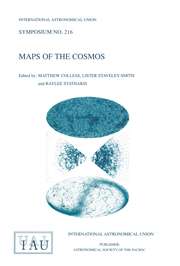No CrossRef data available.
Article contents
How to analyze 2-D nebular spectra
Published online by Cambridge University Press: 25 May 2016
Extract
Core share and HTML view are not available for this content. However, as you have access to this content, a full PDF is available via the ‘Save PDF’ action button.
For a nebula we construct a model, which is a spherical shell defined by inner and outer radii, density distribution and velocity field. The Teff and the luminosity of the central star are assumed to agree with observations. Then the photoionization structure is calculated and the emission lines are integrated. Having found the density from analysis of images the deduction of velocity field in order to fit the observed shapes of spectral lines is relatively easy. A detailed description of computer codes applied for the analysis of nebular spectra is presented in our earlier paper: Gesicki et al. (1996). See also Górny et al. in this volume.
Information
- Type
- IV. Envelopes
- Information
- Copyright
- Copyright © Kluwer 1997

